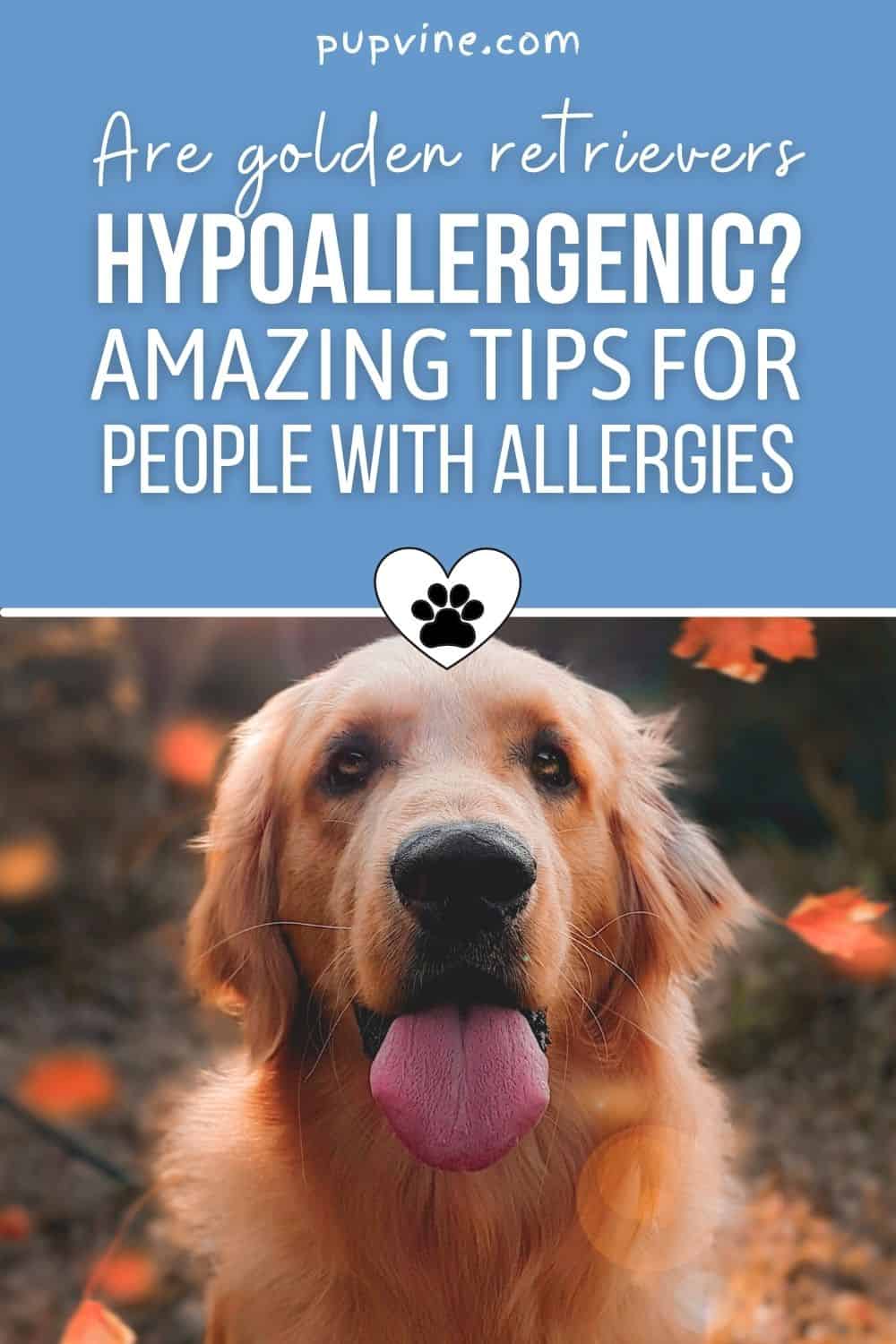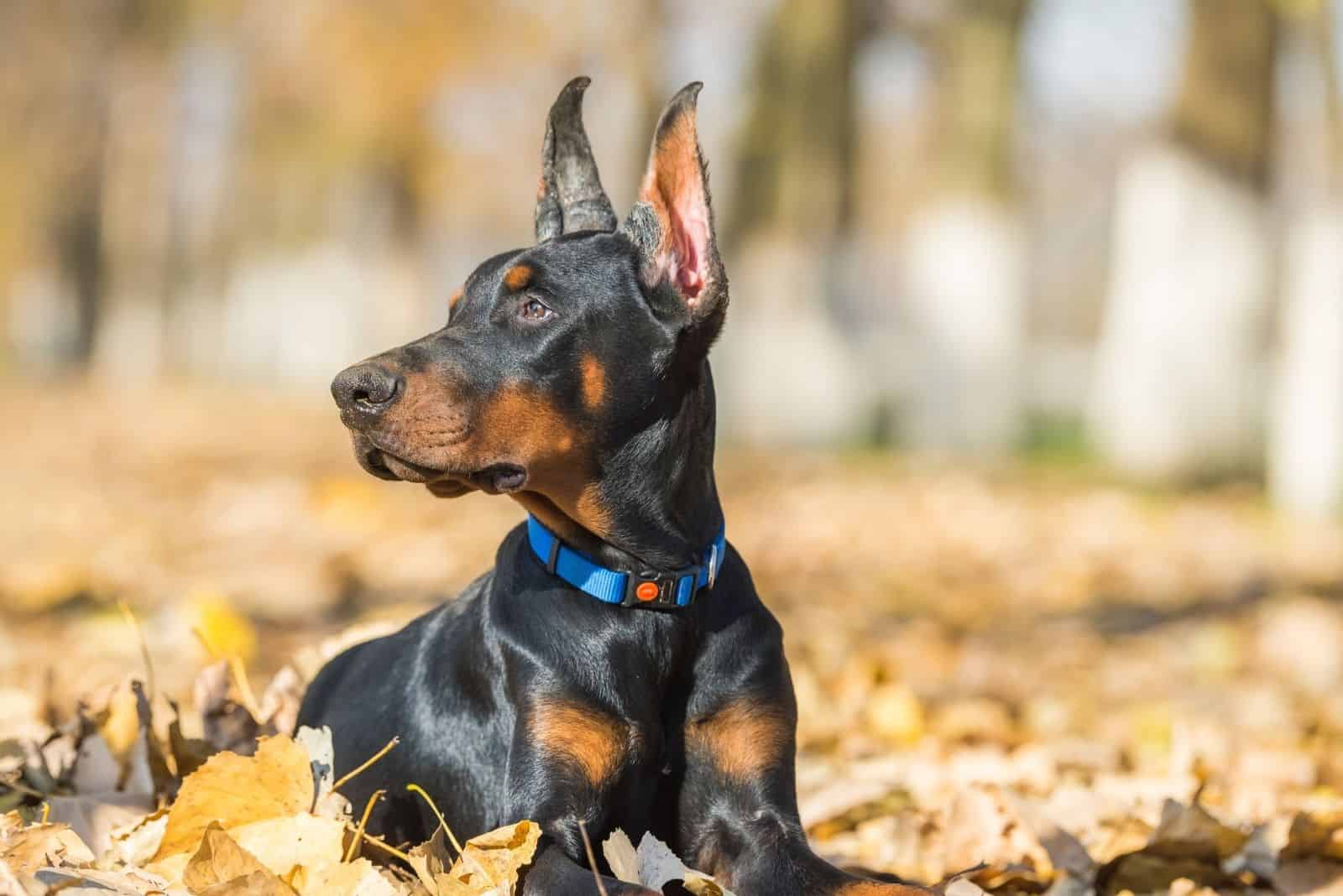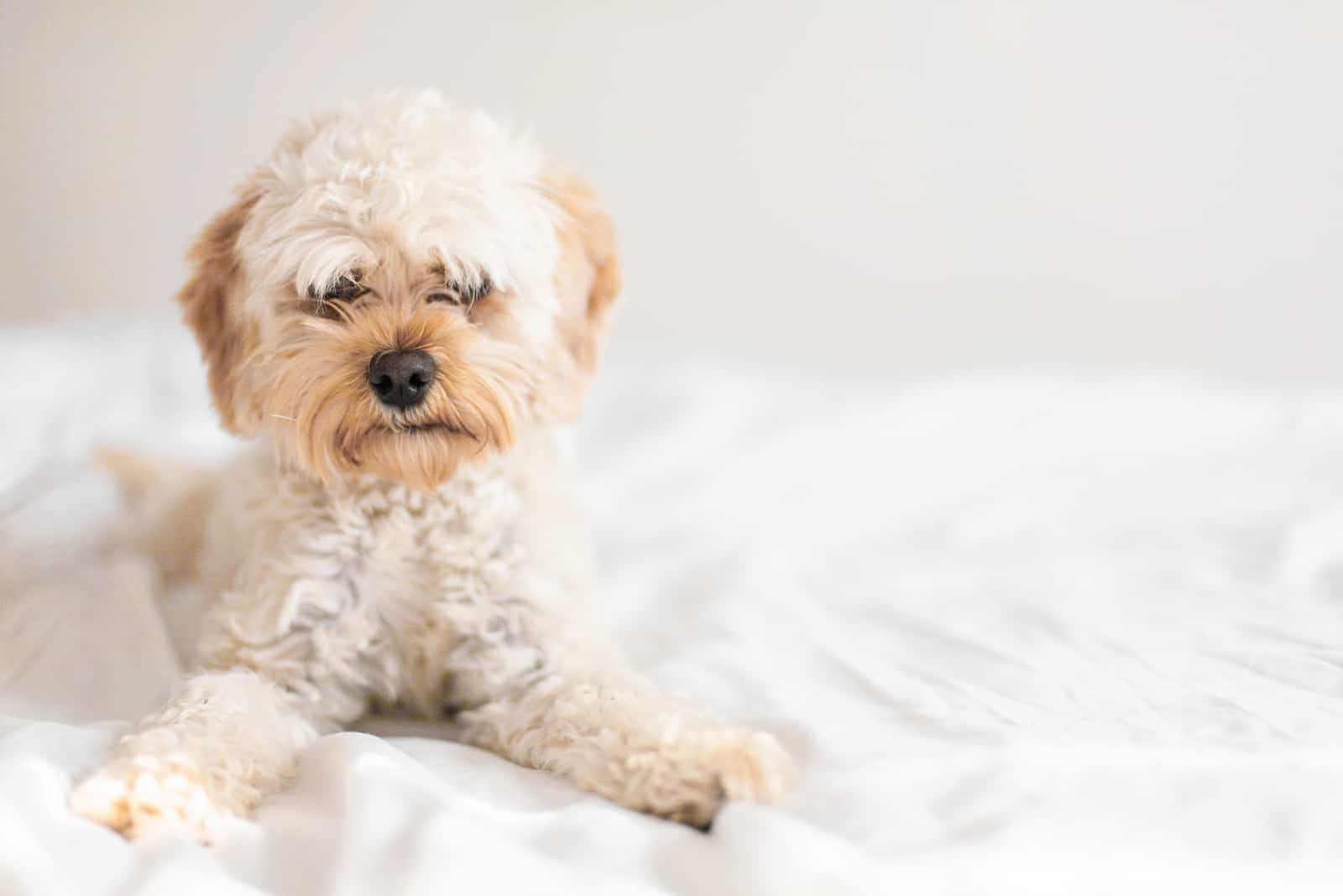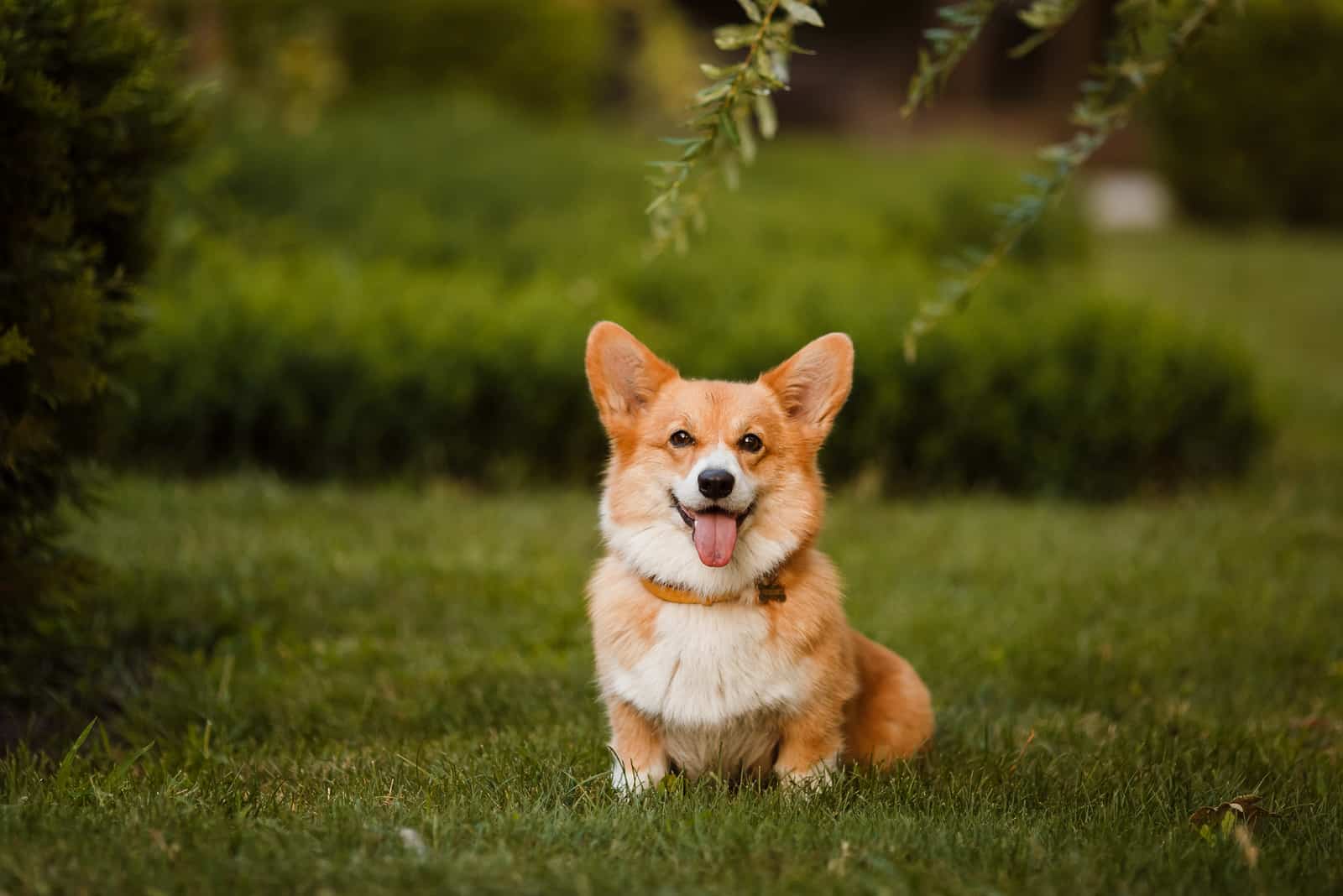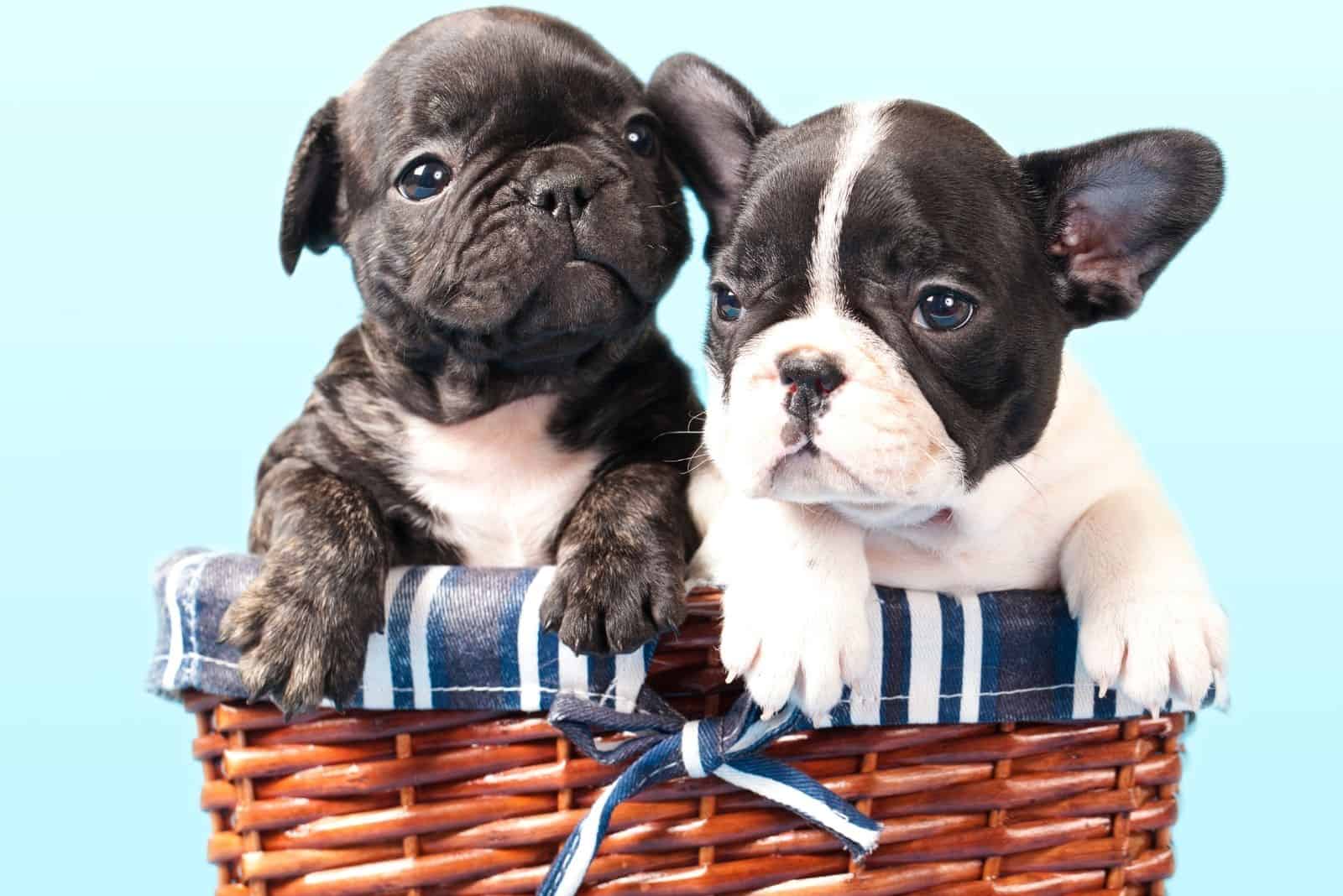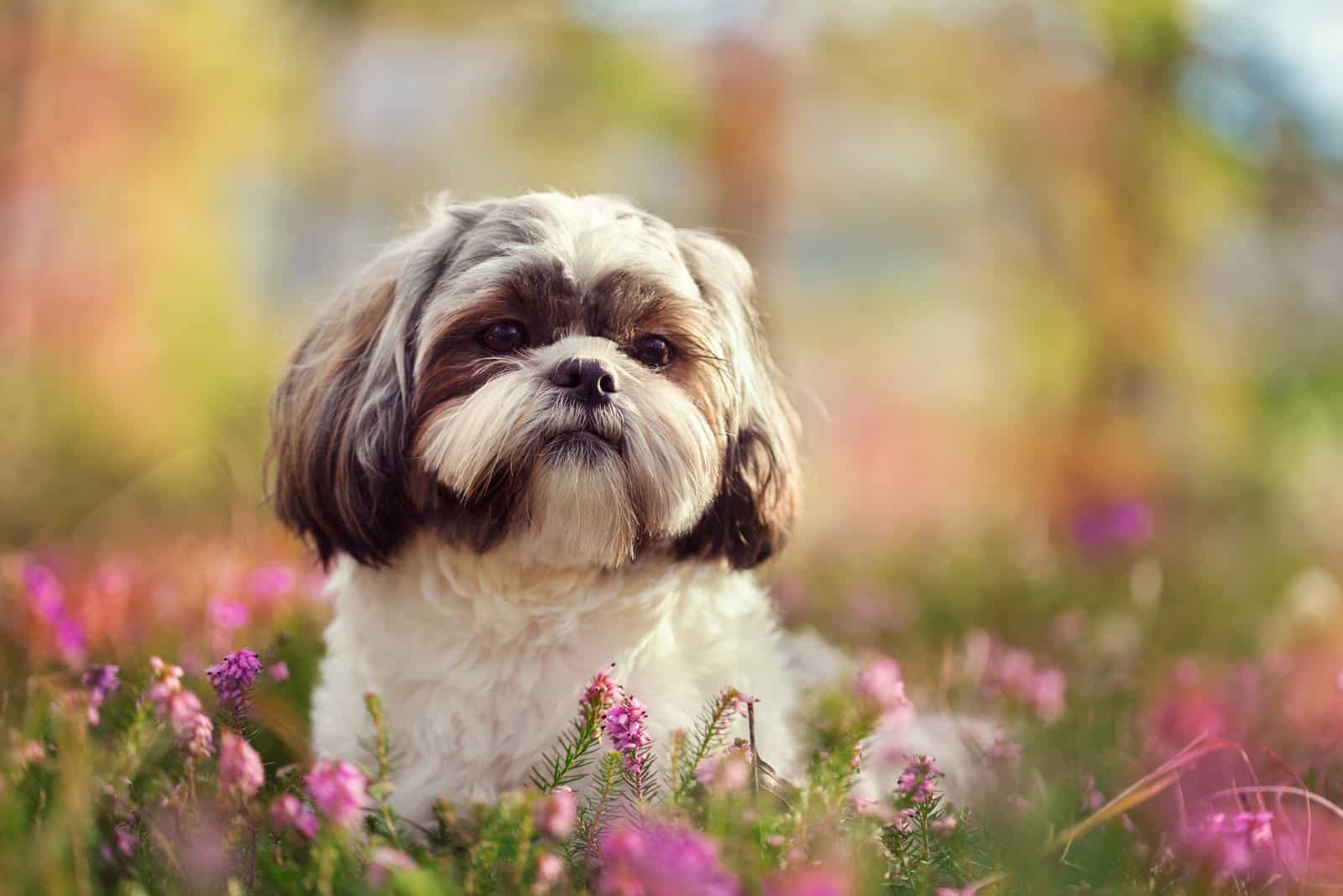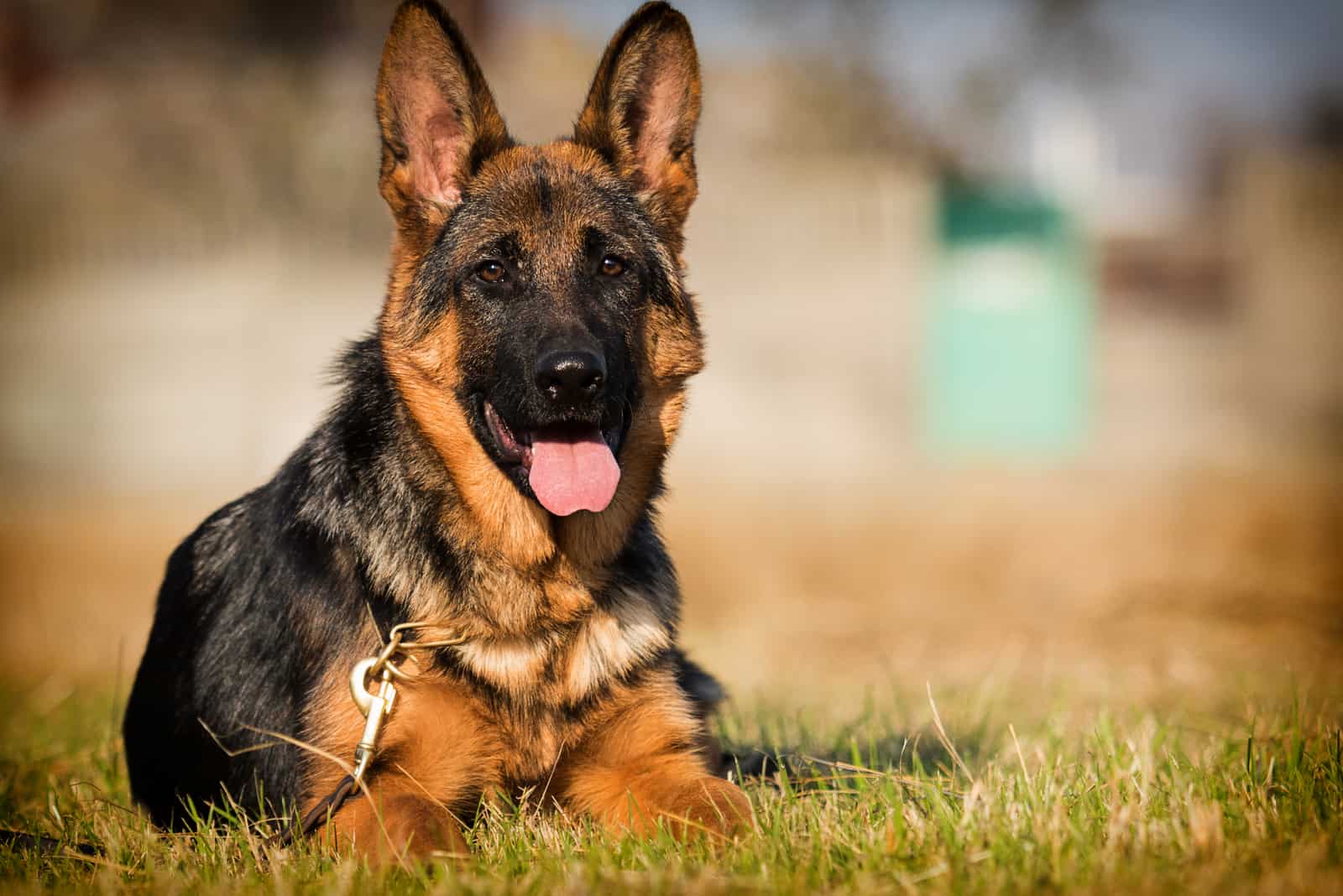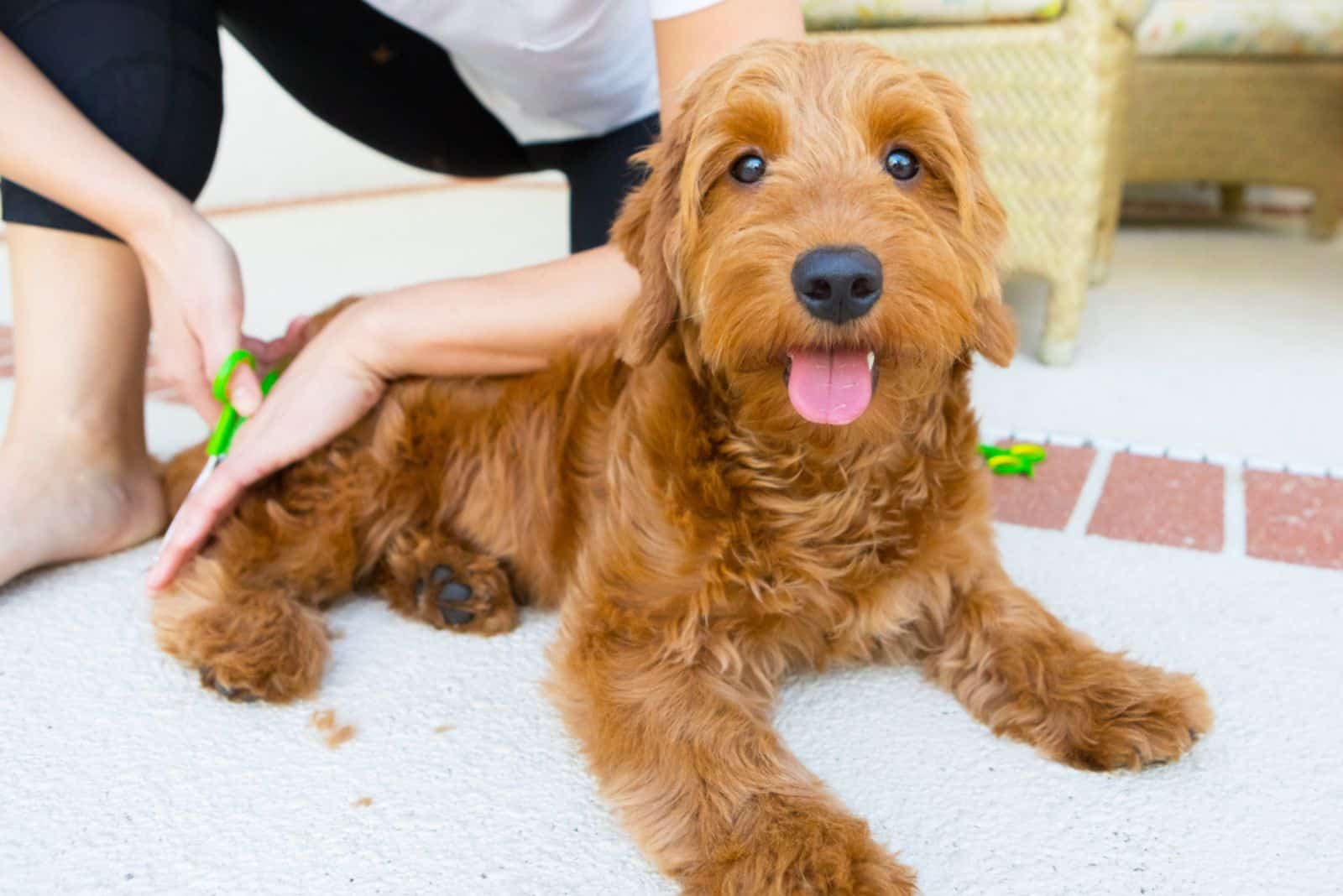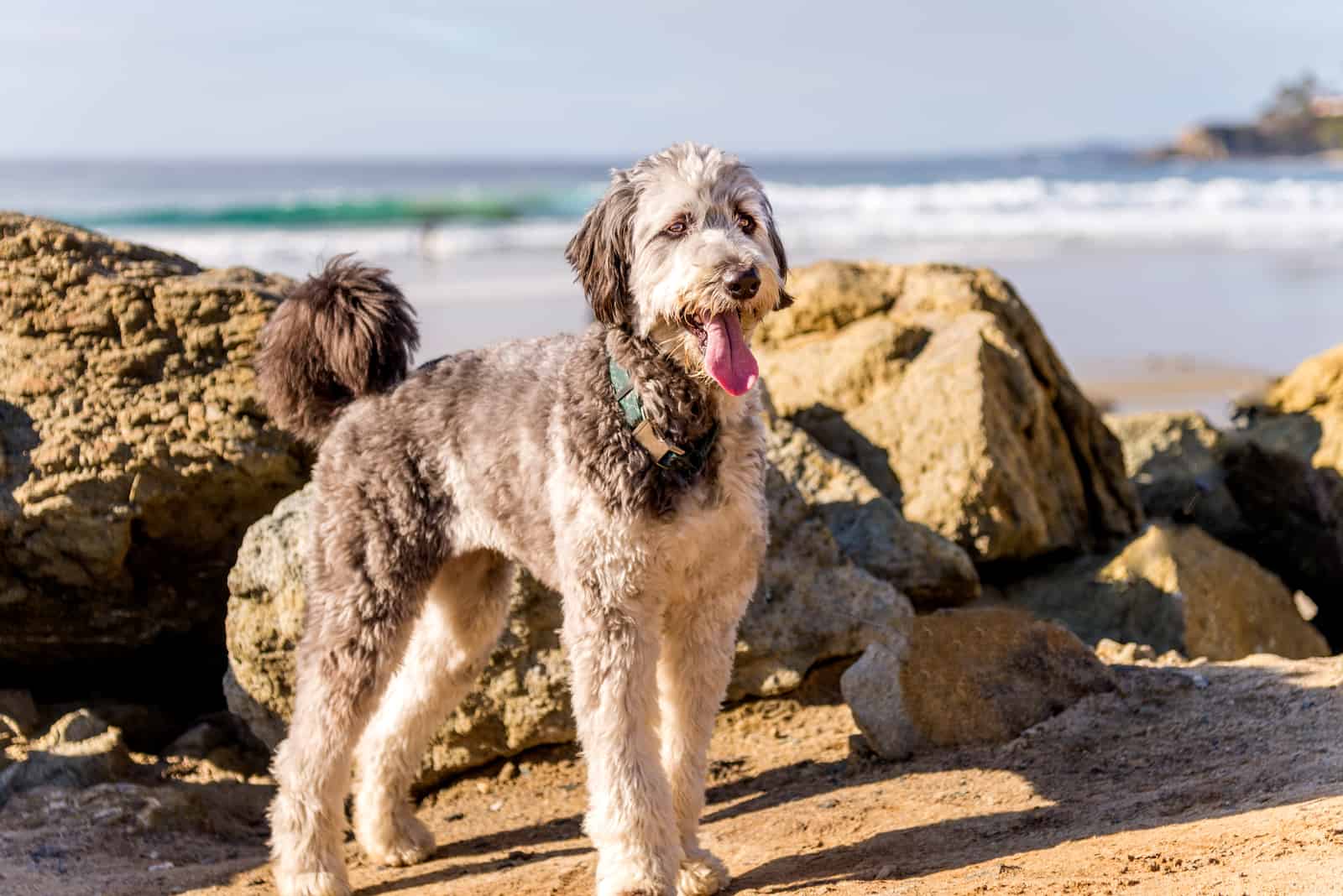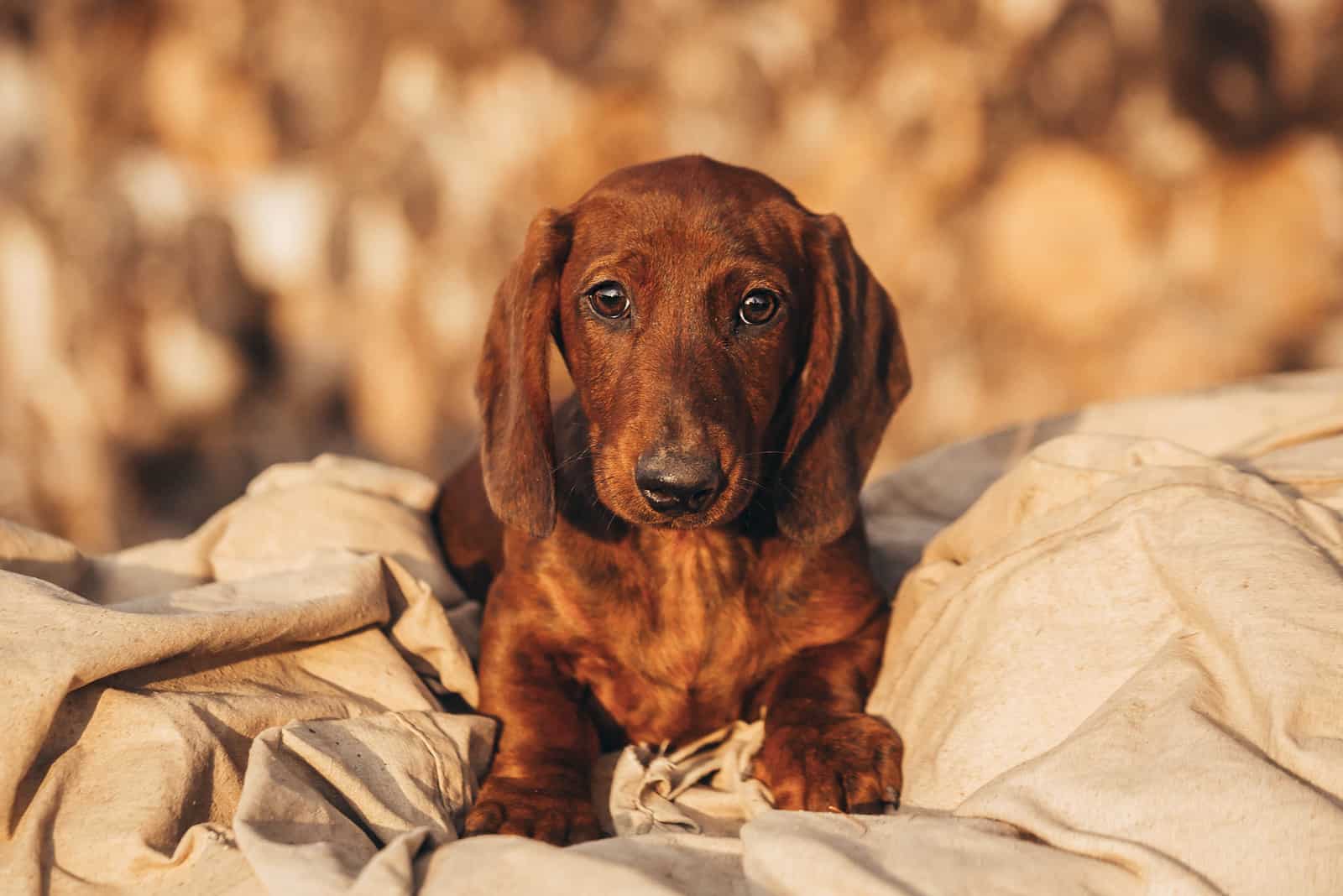If you’re a dog lover, there is nothing as devastating as suffering from a dog allergy. In the end, what is worse than the scenario in which you can’t be near your beloved pooch?
As they are one of the most commonly owned breeds, one of the most searched questions online is: “Are Golden Retrievers hypoallergenic?”
Since no one is really happy about sneezing, coughing, itchy skin, and watery eyes, it’s understandable why people are worried about this.
So, will Goldens be a great addition to your allergy-prone household, or should you get some different dog breed?
Here’s what you need to know!
What Does a Hypoallergenic Dog Mean?
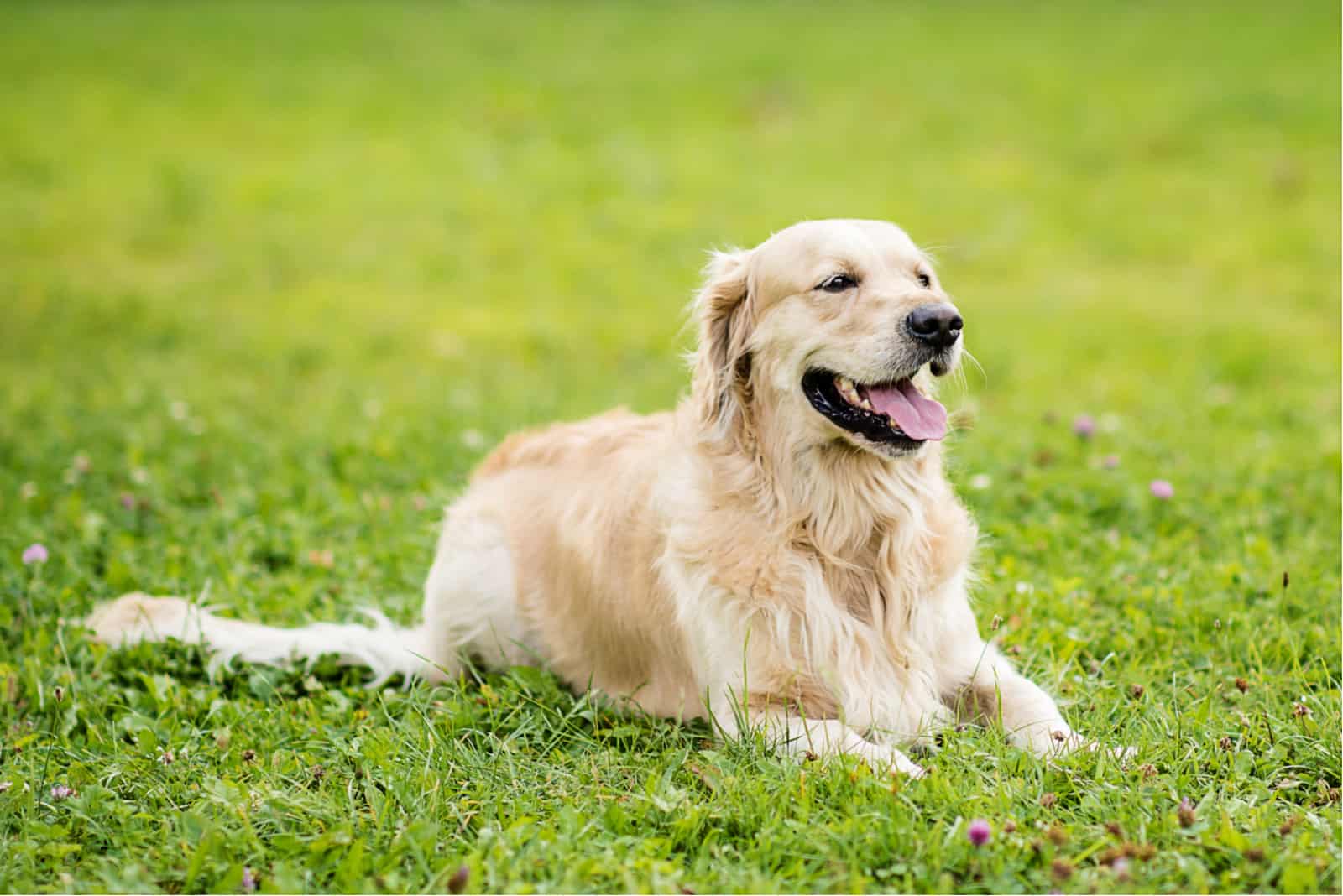
Hypoallergenic is a term we commonly see written on many products, such as mattresses, shampoos, and bedsheets.
The word’s root is ancient – “hypo” means “under” in the Greek language – but no one really used it until around the 1950s, when cosmetics companies started using it for advertising their products.
The term became used for products that are considered to have fewer allergy triggers – or allergens – than regular versions of the same product.
If you’re someone prone to allergies, finding hypoallergenic products is essential for your everyday life. This includes the food you eat, your beauty products, and even the type of pets you plan to have.
But, what does this mean when we’re talking about dogs?
In canines, “hypoallergenic” means there is not much dog dander production. The less dander the dog produces, the lower the chances of having an allergic reaction.
A low amount of shedding also helps allergy sufferers. Contrary to popular belief, it isn’t dog fur that causes you health problems, but the dander that sticks to the dog’s hair and then flies around your house and onto your furniture.
Sadly, despite what they might tell you, there isn’t a truly hypoallergenic dog. Just like humans, all dogs produce flakes of dead skin that dander consists of.
This happens when their skin changes, grows, heals, sweats, during scratching, and so on.
Even the dogs that people consider hypoallergenic still produce a certain amount of dander – however, their fur quality doesn’t allow that dander to spread around.
However, it isn’t just dander that causes you issues. The same goes for dog’s saliva and urine.
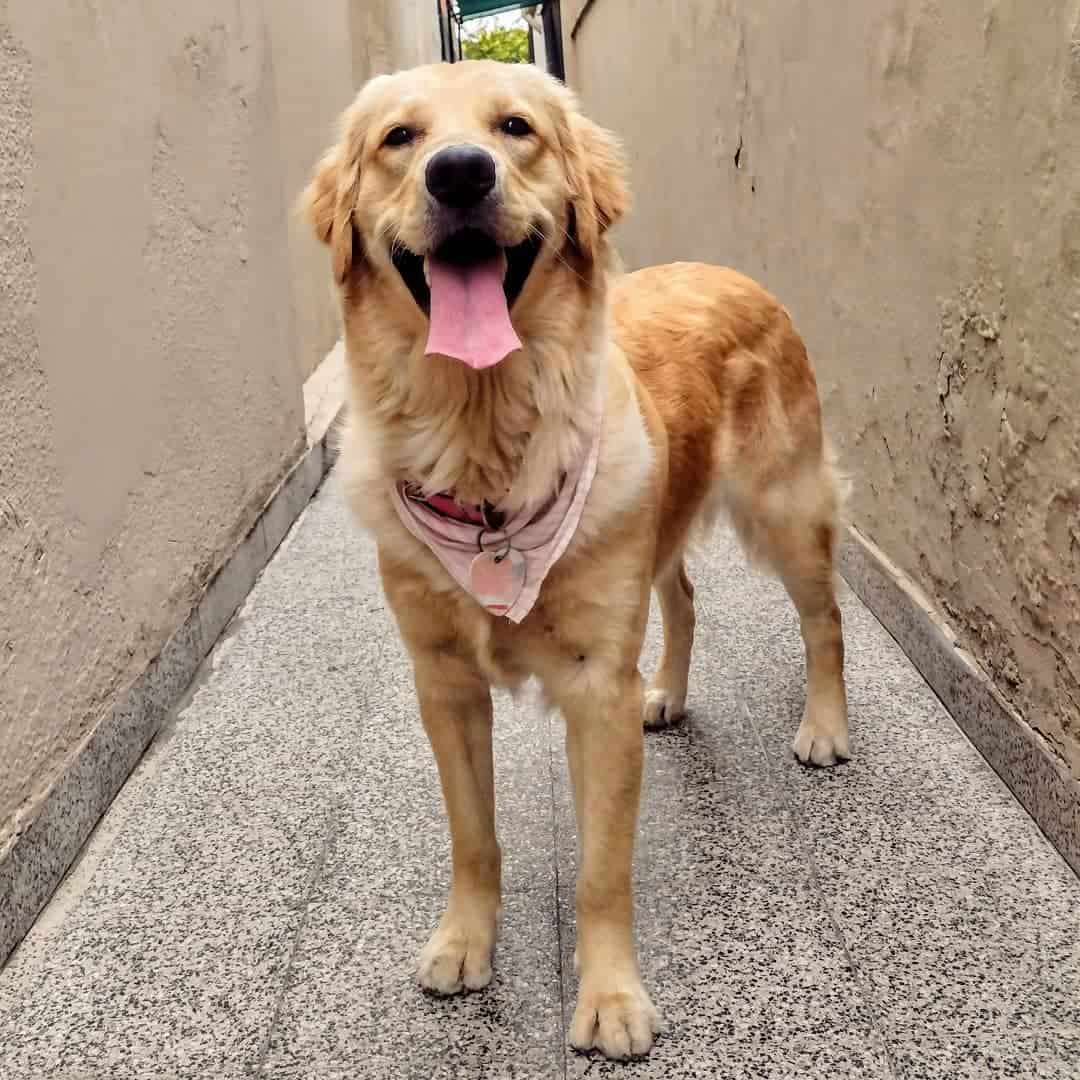
Photo from:@hanna.golden6
The protein responsible for creating dog allergies in humans is found in most canine bodily fluids.
If you’re an allergy sufferer, you should be aware that any dog breed can cause you problems, no matter the amount of shedding. Also, these allergies can change throughout your lifetime.
For example, you might suddenly experience an allergic reaction to the pet you’ve had for years! Or, maybe you might have an issue with a breed you never had any problems with before.
There are no rules, and nothing is written in stone. When it comes to finding the perfect dog, it comes down to the trial-and-error method.
Sure, you won’t adopt a dog just to discover you’re allergic, and then return it. This isn’t humane, and it isn’t the right way to deal with these things.
What you should do is spend as much time as possible with a dog breed that interests you and see how your body reacts to it.
If you don’t have an issue with your neighbor’s German Shepherd, then chances are you’re not allergic to this breed.
Does the Fur Type Matter?
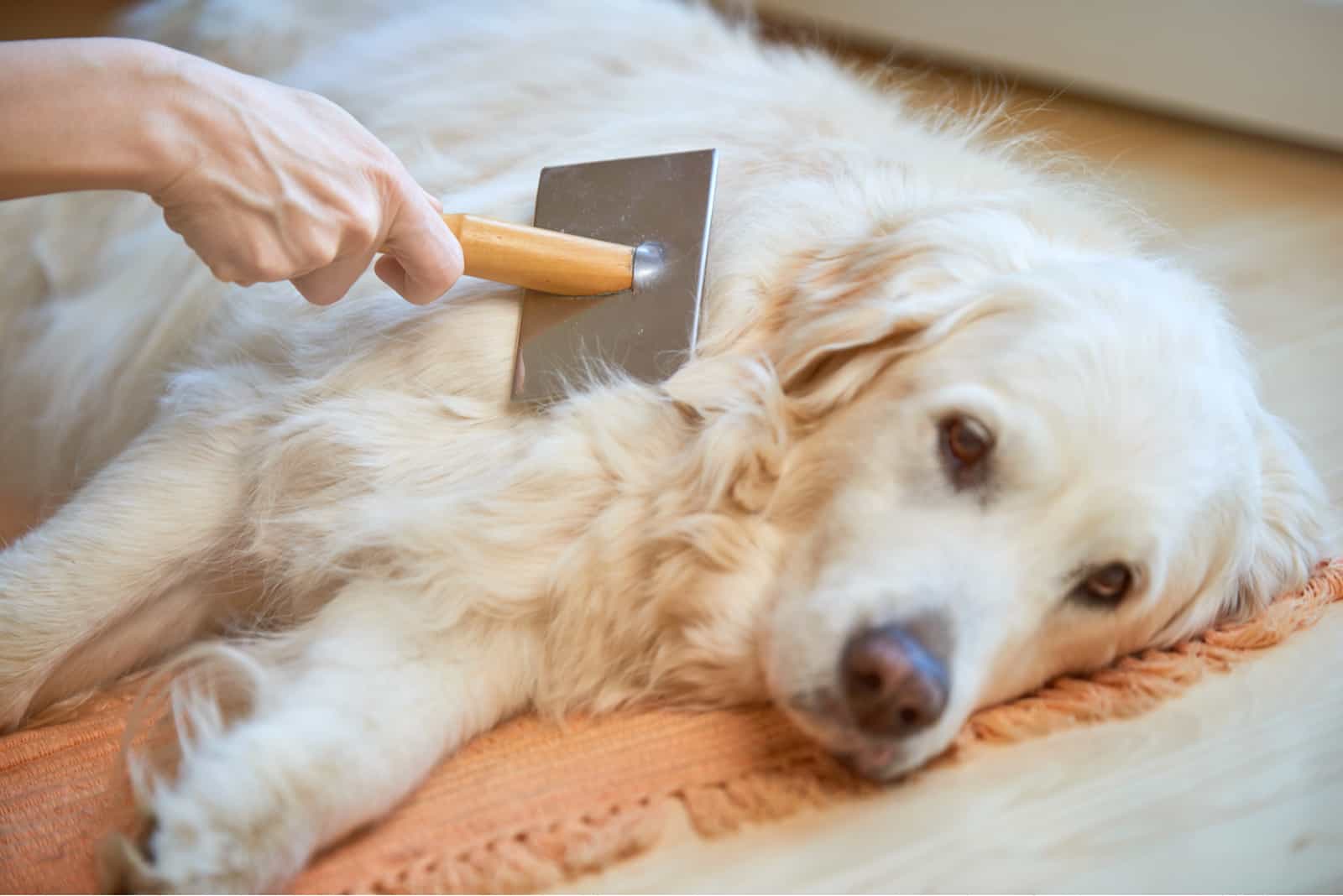
Since the amount of shedding and allergies are indirectly connected, you may wonder if the dog hair type matters.
Dog lovers have noticed that certain dog breeds – most notably, Poodles, Yorkshire Terriers, Cocker Spaniels, Maltese, American Hairless Terriers, and Schnauzers – don’t cause as many allergies as some other breeds, such as a Bulldog Terrier.
While, at first, people thought this was due to the low shedding amount these breeds have, but the reality is a bit more complicated.
Sure, the lack of shedding is a contributing factor in determining hypoallergenic dog breeds; the thing that truly makes all the difference is the lack of dander.
A dog that sheds less has fewer chances of contaminating the environment with dander.
Dog breeds that are considered hypoallergenic don’t necessarily produce less dander, but have a specific fur type.
If the dog doesn’t shed excessively, then the dander won’t build up on your carpet, furniture, and clothing.
While this won’t make things much easier when you want to cuddle with your dog, it will allow you to spend time in the same room as your pooch.
Most curly-coated breeds like Poodles and Bichon Frise have an interlocking coat that is similar to sheep’s wool.
The fibers of their hair lock around each other tightly, which means that the loose hair won’t fall off as much, but rather, stay attached to the rest of the fur.
In such dog breeds, the healthy hair follicles hold the loose fur tightly, such as Velcro would.
To get rid of this shed fur and prevent mats, regular brushing is the key. As their coat won’t fall off on its own, you need to help it by regularly brushing it.
Now that you know this, it’s time to get to the question of the day:
Are Golden Retrievers Hypoallergenic?
Breed History
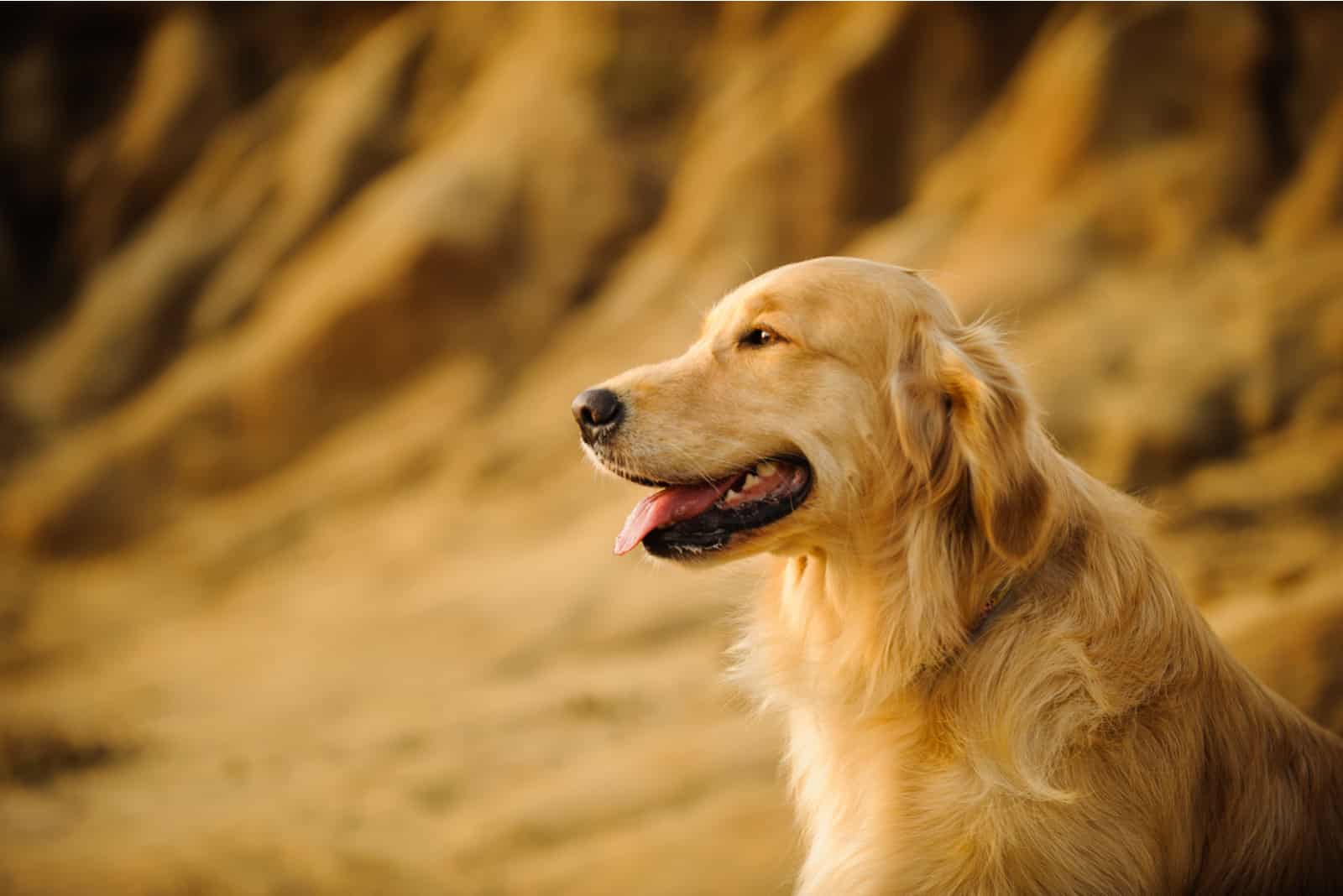
We cannot talk about Golden Retrievers without mentioning Dudley Marjoribanks, the person responsible for the breed development in the 19th century.
He bred several dog breeds on his lands in the Scottish Highlands trying to create the perfect gun dog.
Marjoribanks tried creating a breed that could handle the rainy climate and areas of rugged terrain. To do so, he made a crossbreed between the Yellow Retriever and the Tweed Water Spaniel, which is now an extinct breed.
He also combined Bloodhounds and Irish Setters, hoping they would add their own features to the mix.
The first ‘official’ Golden Retriever appeared in 1908 at a British dog show. At around the same time, the breed was brought overseas to the United States and Canada.
It didn’t take long before this gun dog retired from the fields and became a beloved pet for aristocrats.
The breed rose in popularity in the 1970s when Gerald Ford, president of the United States at the time, entered the White House with his Golden called “Liberty”.
Fur Type and Grooming
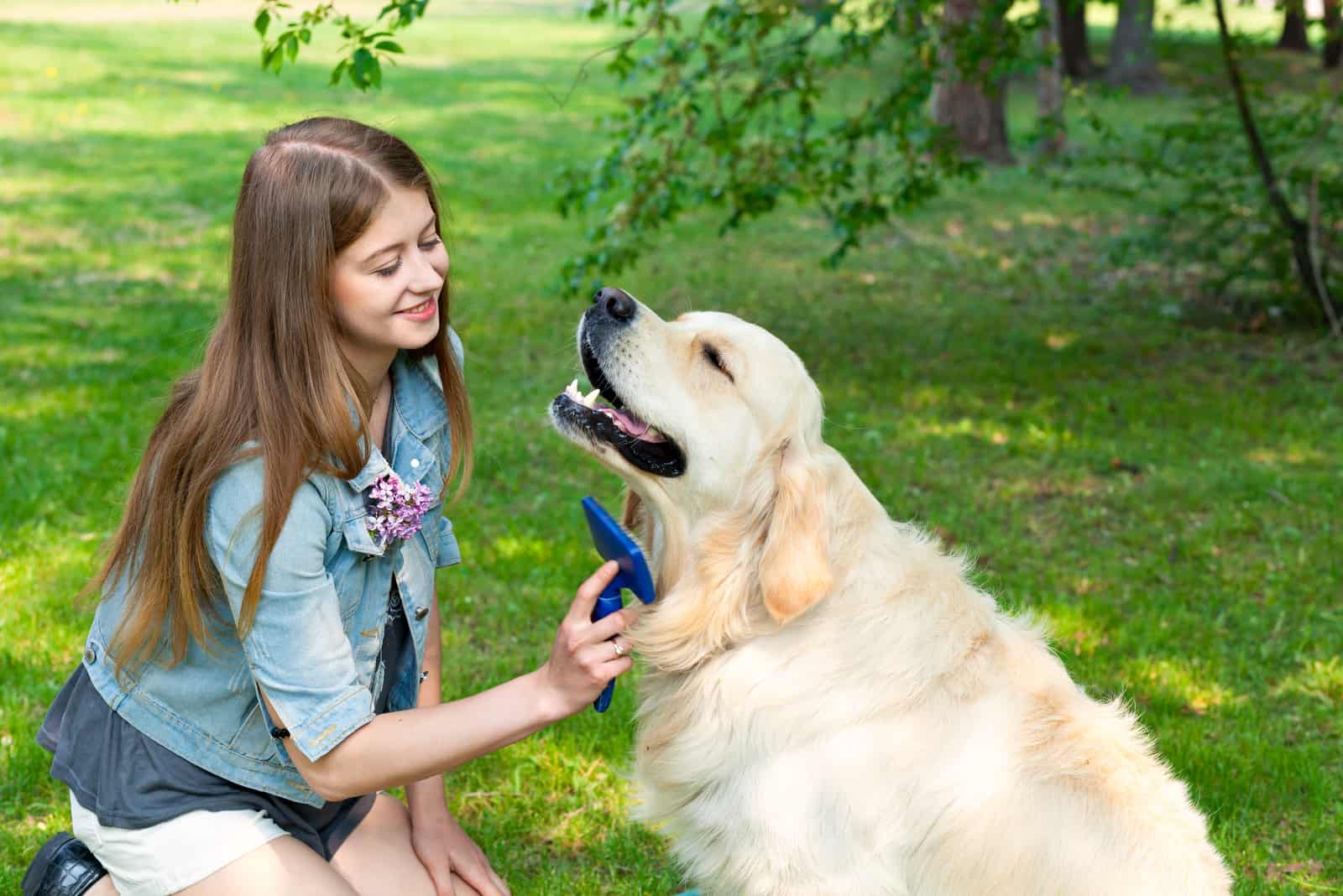
You all probably already know how a Golden Retriever looks. These medium-sized dogs are one of the most popular dog breeds globally.
Goldens have a double coat that can be somewhat difficult to groom. Their outer coat is dense and water-repellent, and their undercoat is thick and warm.
These dogs can have straight or wavy fur, which won’t impact the grooming too much.
They have somewhat longer fur on their underbody and on the back of the front legs, with heavy feathering on the tail, end of the thighs, and back.
As their name states, their coat comes in golden color. While you may find the so-called “White Golden Retrievers”, the American Kennel Club (AKC) doesn’t recognize this color, and these dogs can’t be registered.
Goldens tend to shed quite heavily. While the shedding is reasonably moderate during the winter and summer, the amount increases in the spring and fall.
This can be an issue as any aspiring dog owner will have to prepare for regular house cleaning.
A Goldens’ coat is very thick, which means plenty of grooming, so it would be best to incorporate some daily brushing into your grooming routine as this is the best way to prevent tangling.
If you can’t brush your pup daily, once a week should be considered the bare minimum. Anything less than that might cause a real disaster.
Also, did you know that there are two types of Golden Retrievers? If you want to learn more (and see whether this affects their hypoallergenic status!), you can click here for more info.
Are Golden Retrievers Hypoallergenic?

Golden Retrievers make fantastic family pets. They are the first choice for many parents with little kids or people who want a friendly companion.
Unfortunately, Golden Retrievers are not hypoallergenic.
These dogs are enormous shedders, which means they aren’t a suitable match for dog owners with severe allergies.
Their double coat is what causes this issue. The outer coat is very long, and the hair can pose a massive issue for allergy sufferers.
The undercoat doesn’t help either. It’s made of soft and fine hair, similar to the stuffing in your pillows. This layer makes for perfect insulation during cold winter months as it keeps your pooch warm.
However, once the temperature starts to rise, this undercoat poses an issue rather than a helpful tool, and because of this, your pup must shed it.
This event is known as a “coat blow.” Your dog will experience an intense shedding period during which the undercoat will become thinner.
This thin undercoat works much better for your pup as it will allow his skin to breathe and cool down during warm summer months.
However, the loose hair will go everywhere, and this is terrible for people with dog allergies as the dog dander will spread around via loose hairs!
Can You Keep a Golden If You Have Allergies?
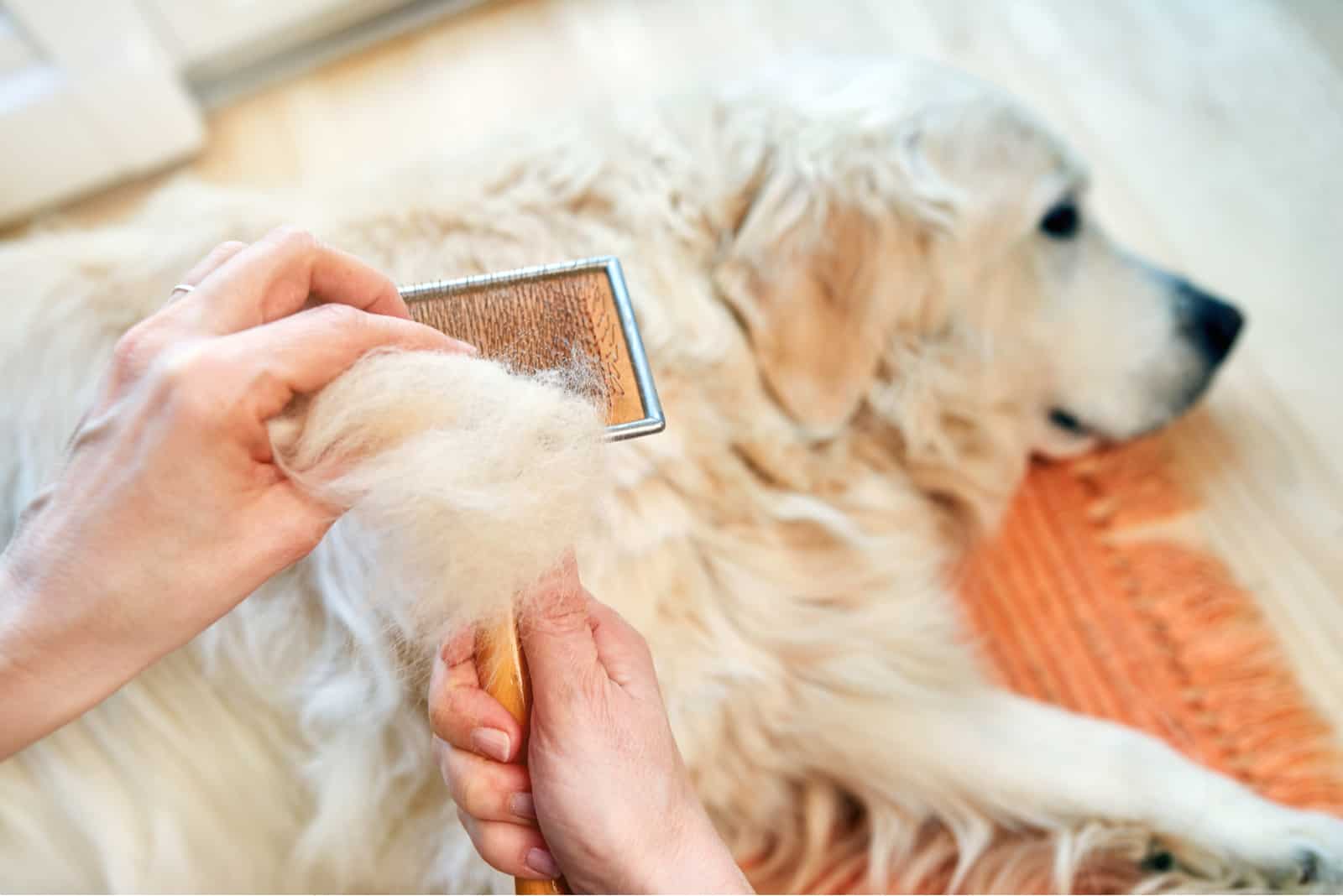
Despite the negative answer to the question, “Are Golden Retrievers hypoallergenic?”, this doesn’t mean that it’s impossible to have this dog breed if you suffer from dog allergies.
However, it does mean that you’ll need to take some precautionary measures when taking big shedders in, such as Goldens or Labrador Retrievers. This has to be done so the spread of dander is under control.
If you or someone from your household suffers from dog allergies, there are several things you need to do to make everything easier.
Here’s how to make your house allergy-friendly when you have a Golden Retriever.
Regular Grooming
The best thing you can do to keep dander at bay is to give your Golden regular grooming sessions.
This includes brushing your dog’s coat daily and giving your pooch monthly baths using a gentle dog shampoo.
It’s always a good idea to invest in a good at-home brushing kit, which includes a high-quality bristle brush, shed remover for the undercoat, and a good shampoo. You can find all of these on sites such as Amazon.
You should also invest in some protective gear, so you and your pooch can stay safe while outside. In other words, you need suitable gloves, masks, and similar products, so the dust from his paws doesn’t bother you.
Wash your dog every few weeks to keep the dander to a minimum. A good idea would be to visit a professional groomer every now and then.
They can help you remove any excess hair and reduce the amount of shedding.
Not just that, but if you remove a Golden’s coat regularly, the existing healthy follicles won’t end up tugged on. This is another thing that helps you reduce the amount of loose hair flying around.
Just don’t go overboard with the bathing. Too much bathing can dry the skin out, as it removes healthy, natural oils, and dry skin will produce more dander, which is never a good thing for an allergy sufferer.
Pest Control
Long-haired breeds, such as Golden Retrievers, are loved by parasites such as fleas and ticks. The type of their coat is the perfect home for all these nasty pests, which force your pooch to scratch more.
These pests can ruin the quality of your dog’s skin as well, and this, too, can lead to increased dander production.
The best thing you can do is talk to your vet to find adequate pest control in order to stop the parasites from spreading. Think about a once-a-month pill, a flea collar, or some topical treatments… anything that can stop these nasty creatures from spreading.
Clean Environment
Think about your house. Fluffy, thick rugs can be challenging to clean. Try getting furniture that is very easy to maintain. The easier everything is to clean, the fewer issues you’ll have.
Try to include a decent house-cleaning regimen, such as monthly carpet steam-cleaning. Getting a good air purifier, such as the HEPA system, is also a good idea. Dander essentially is a form of dust, and you can clean it as such.
Also, don’t allow your pup to sleep in your bed or even in your living room. While this might be difficult, sharing a bed with your dog is bound to make your allergies much worse than they were before.
Get your dog a good, comfortable dog bed so he can have a place to sleep on. This can also make everything much easier for him.
Good Diet
While food cannot entirely make a dog hypoallergenic, a proper diet can make a dog shed less, which will make things much easier for people with dog allergies.
Feed him dog food filled with omega-3 and omega-6 fatty acids that are great for fur and skin health. If a pup’s coat is healthy, there won’t be many loose hairs for you to deal with.
Dog treats are also very important for the coat’s health. Most dog owners simply cannot resist those puppy eyes and will give their pup everything he wants! However, this is wrong, especially long-term.
If you feel like you have to give your pooch treats, especially as positive reinforcements, try giving him something healthy. Here are few treat ideas from groceries you likely have at home:
- Brussels sprouts
- Hummus
- Paprika
- Fig sprouts
- Artichokes
All of these foods are a better option than the cheap and fatty dog treats you can buy in pet shops.
Good Hygiene
Since dander is the main culprit here, you have to lower the chances of inhaling it. Wash your hands regularly, and don’t touch your face after you’ve played with your pet!
It would be wise to wash your hair as often as possible as well, especially if you have long hair. This is essential if you’ve decided to allow your pet to sleep in your bed, despite the possible health issues.
If this isn’t enough, try discussing some medicine with your doctor. This might include allergy shots or daily medication to keep your allergic reactions under control.
Luckily, there are several types of antihistamines out there, and some are bound to help you feel better.
Adult Vs. Puppy Allergy
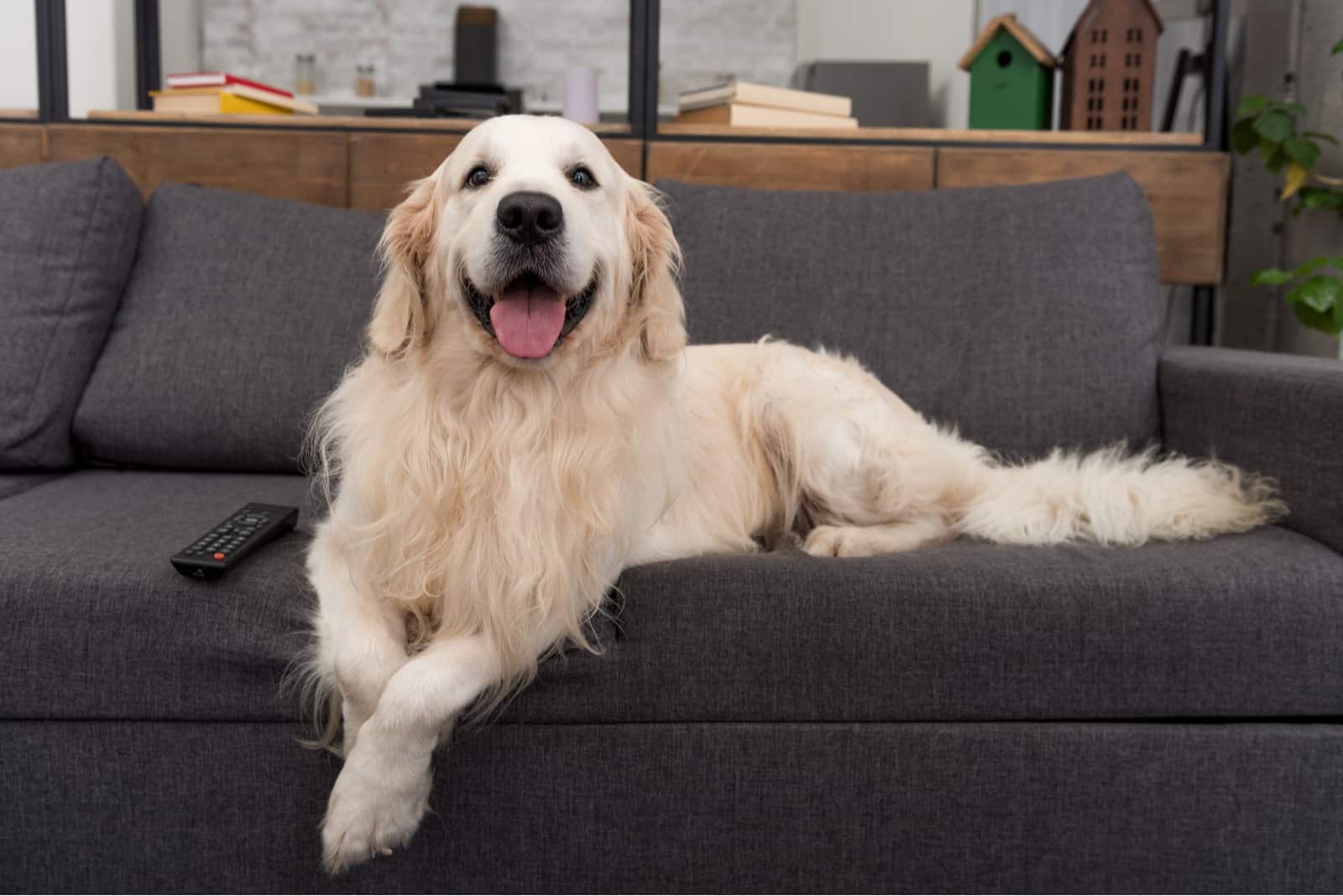
Sometimes, Golden Retrievers can get you into a not-so-great situation because a puppy that you might not have an issue with can give you an allergic reaction once he grows up. This happens more often than you might think.
As your dog ages, his fur will change as well as the amount of dander it produces. Some pet allergies will develop over time, and they are more prominent in adult dogs.
Because of this, you should make sure you’re okay after spending time with a fully grown Golden.
Adult Goldens produce dander in a higher amount than puppies. Even if you’re feeling entirely okay with your pup, be prepared that the allergies might worsen over time.
Few things are more heartbreaking than having to rehome a loyal dog after spending years together.
If you’re someone who commonly deals with allergies, make sure you’ve considered the possibility of making these issues worse once you get a dog.
Also, a Golden Retriever owner who becomes pregnant might suddenly find themselves dealing with an allergic reaction, despite never having any issues before the pregnancy.
This is because the hormones during the pregnancy can heighten the immune response and create an allergic reaction.
In case this does happen, your dog allergy will likely last only during the pregnancy, and it will disappear over time.
Not just that, but a study from 2008 proved that exposure to allergens, such as pet dander, could increase the number of useful antibodies in the fetus’ cord blood.
So, while no one likes experiencing signs of an allergic reaction during pregnancy, there may be some long-term benefits for your future baby.
Is a Golden Retriever Mix Hypoallergenic?
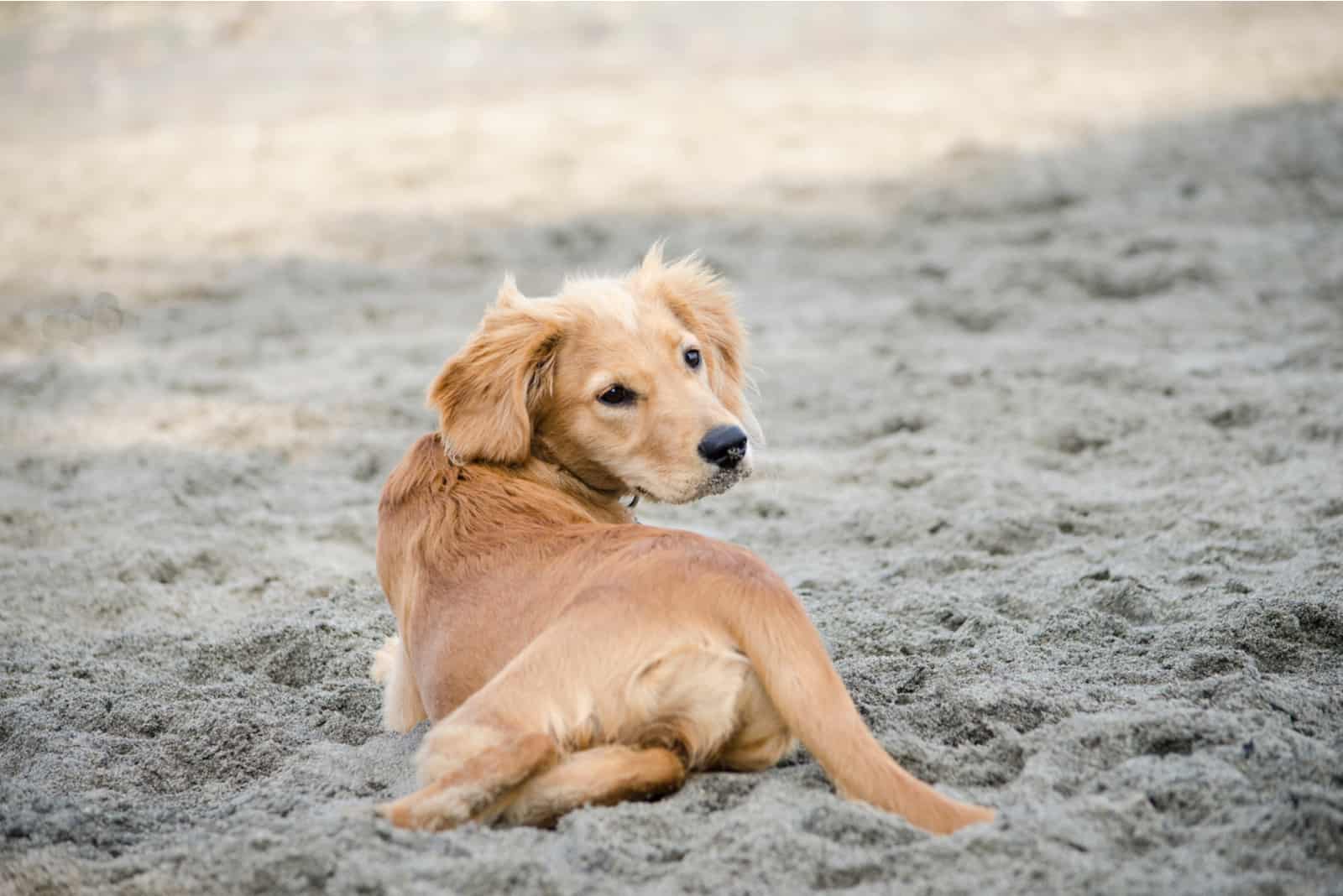
Since you know that Golden Retrievers aren’t hypoallergenic, you may wonder about some of their mixed breeds, especially the Goldendoodle.
A Goldendoodle is a crossbreed of the Golden Retriever and the Poodle. This hybrid breed has the adorable looks of both the Poodle and the Golden, as well as their intelligence, loyalty, and playfulness.
Considering that the Poodle is a breed that is labeled as hypoallergenic, is the Goldendoodle hypoallergenic, too?
The right answer is… Maybe.
The problem with hybrid breeds is that you can never be 100% certain how the offspring will look. The same goes for their coat type.
Despite everything, most Goldendoodles are hypoallergenic. In fact, most won’t even shed due to their curly fur.
So, if you’re an allergy sufferer, then maybe it would be a good idea to opt for this Golden Retriever mix instead.
Once again, keep in mind that no dog is truly hypoallergenic and that there is no guarantee that a designer dog will look the way you want it to, but overall, it would be considered a smarter option than a purebred Golden that is bound to shed.
A similarly-looking designer breed you might want to consider is the Labradoodle; a crossbreed of a Labrador Retriever and a Poodle.
On the other hand, it would be wise to avoid Golden’s mixes with other dog breeds that shed a lot, such as a crossbreed with a Corgi or a Pitbull.
What Other Breeds Can You Get?
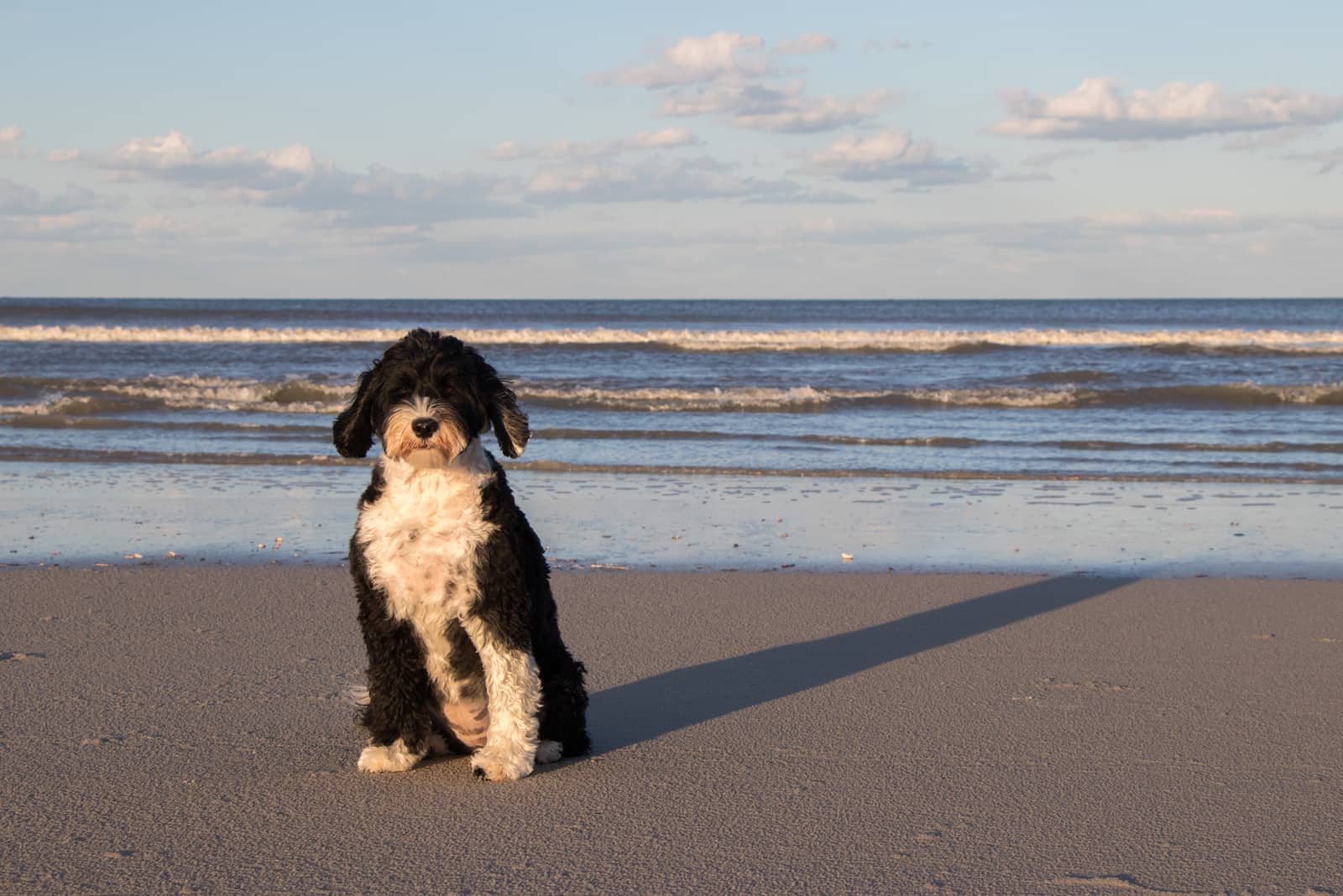
We’ve already mentioned some hypoallergenic breeds that everyone probably already knows about. As you might’ve noticed, most of these dogs are curly-haired, but a hairless dog is also a good option.
Are there some other breeds that you aren’t so familiar with that you might consider getting instead of a Golden Retriever?
Read Also: 25 Big Hypoallergenic Dogs: Going Big Against Allergies
Portuguese Water Dog
If this curly, black-and-white dog looks familiar to you, that’s because it was the favorite pet of the former USA president, Barrack Obama.
These playful, yet laid-back dogs are great family pets – even for people with dog allergies. They can adapt to a smaller living space, so they are suitable for apartment living as well.
These dogs don’t shed as much, and their curly fur prevents any loose hair from flying around and contaminating your environment with allergens.
Coton de Tulear
Suppose you’ve always wanted a dog with a name that everyone will struggle with. In that case, the Coton de Tulear is a great option to laugh at your neighbors and curious passers-by.
According to the legend, this breed consists of descendants from the dogs that survived a shipwreck near Madagascar.
This is a cheerful breed that is so loyal that you can expect it to be your second shadow. They have white, soft fur that might make you confuse them with Bichons. Just like this breed, the Coton de Tulear also won’t trigger allergies in most dog owners.
Check our list of the best Coton de Tulear breeders in the States.
Soft-Coated Wheaten Terrier
Everyone is probably already familiar with these beloved pooches. As their name suggests, they have a wheat-colored coat that is so soft and curly you’ll enjoy petting them.
This is considered one of the most friendly dog breeds out there. In fact, there is even a “Wheaten greetin’,” their signature way of saying “hello” in which they jump to greet their owners.
While their coat is hypoallergenic, you need to groom them well to prevent matting as their fur can tangle.
Xoloitzcuintli
This is another hypoallergenic breed with a tongue-twisting name that everyone will struggle with. The Xoloitzcuintli is a hairless breed that will produce skin dander, but these dead skin flakes won’t fly away that far without the hair they can stick onto.
Even if you get a coated Xoloitzcuintli, this dog will be good for you as it doesn’t shed that much. This makes them, too, the perfect breed for allergy sufferers.
Just make sure you take care of this dog’s sensitive skin as it doesn’t have any hair to protect them from the environment.
Peruvian Inca Orchid Dog
This is another dog breed that can come both coated and hairless. Both types are considered hypoallergenic as they won’t shed as much as plenty of other breeds. However, they still produce dander, so the chance of an allergic reaction is always there.
According to the AKC, these dogs came from 13 dogs brought from Peru in the first half of the 20th century. This is also the national dog of Peru.
Chinese Crested Dog
This dog is deemed the ugliest dog breed in the world, but many people still consider the Chinese Crested Dog adorable.
Despite their unappealing appearance, they have one huge advantage. As these dogs barely have any fur on them, they won’t shed, making them the perfect choice for any allergy sufferer – although the risk is never entirely eliminated.
Havanese
Havanese are adorable little dogs that can be considered cousins of another hypoallergenic breed, Bichon Frise. These pups make perfect family companions, while at the same time remaining entirely safe for people suffering from dog allergies.
This dog breed sheds very little to none, produces an insignificant amount of dander, and they aren’t known for drooling. All of this makes them nearly perfect hypoallergenic dogs.
Regulate Dander with Good Health
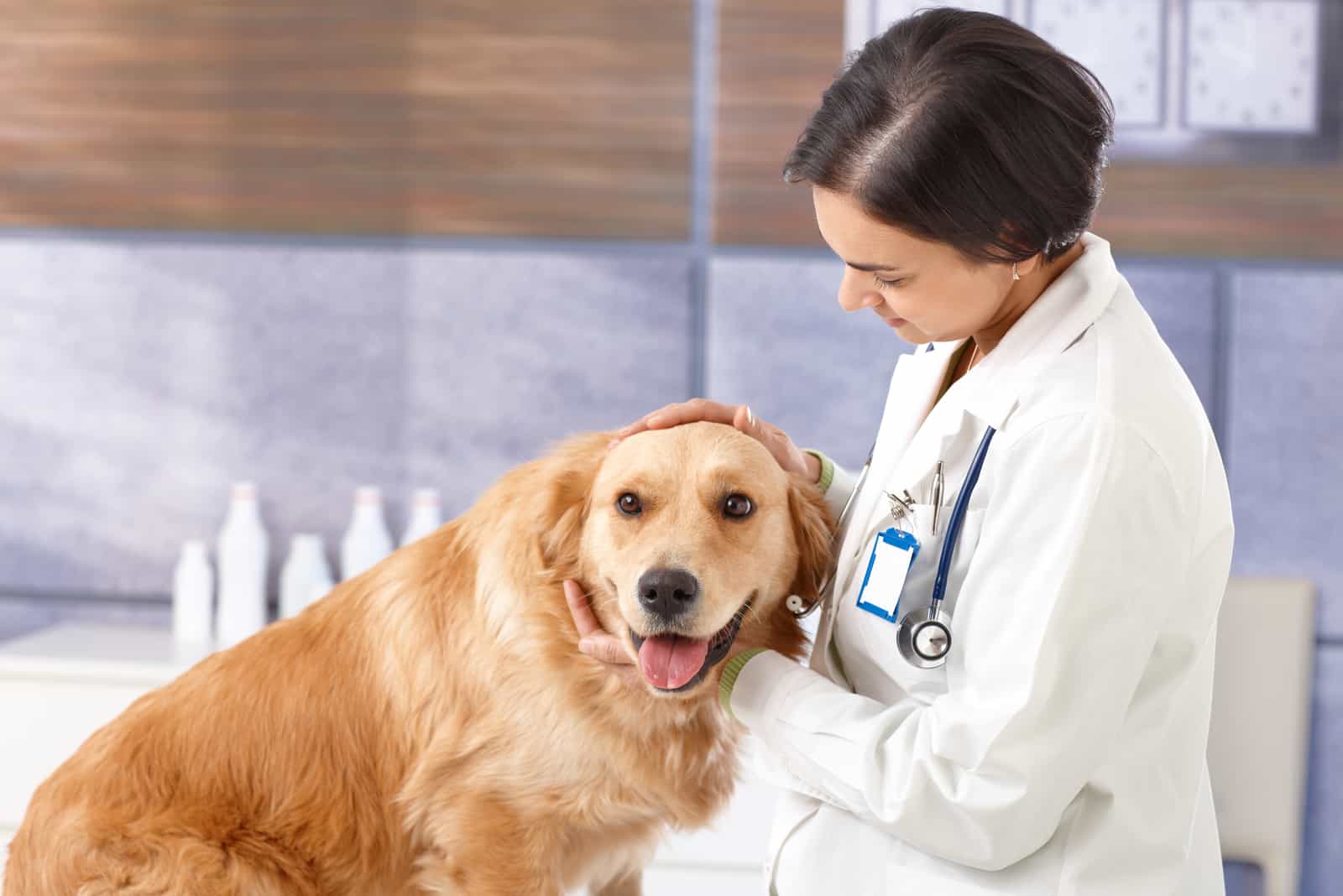
Luckily, there is one thing you can do to keep your pooch as healthy as possible and reduce shedding, and that is to keep your dog healthy. A dog’s coat will be the first to show signs that your pup isn’t as healthy as possible.
You may notice that your four-legged companion suddenly has dull fur, skin problems, or even some bald patches. This indicates that there is some underlying issue. Not to mention that all of this will lead to dander.
If your Golden has itchy skin, he’ll scratch more often than usual. As he rubs himself, the dead skin flakes will fly around and contaminate the environment.
While good grooming habits are important for reducing allergens, you should also take care of your pup’s overall health. If you have a healthy dog, you won’t have to worry about sneezing so much.
The essential thing is to feed your dog a balanced diet and give him high-quality dog food to ensure he gets all the needed nutrition.
Of course, the first thing you need to do is take your pup to the vet so that they can rule out some more severe health concerns.
Just because you might have an issue with dog allergies, you don’t need to give up your dream of becoming a Golden Retriever owner. While you might need to do some maintenance, it will be worth it.
Talk to your doctor if you think you might need some antihistamines or other allergy medications.
Read Next:
• 15 Amazing Golden Retriever Breeders In Florida In 2022
• 11 Best Golden Retriever Breeders In Michigan
